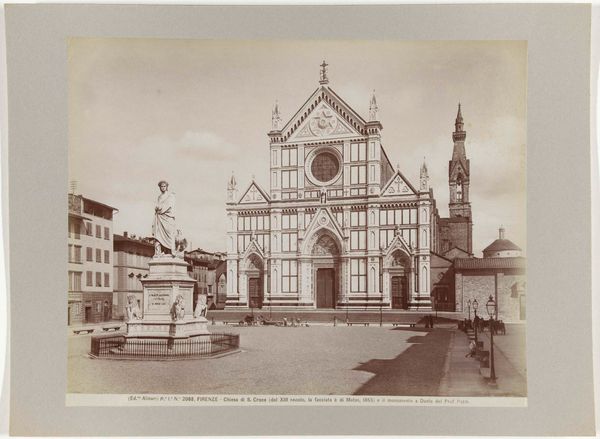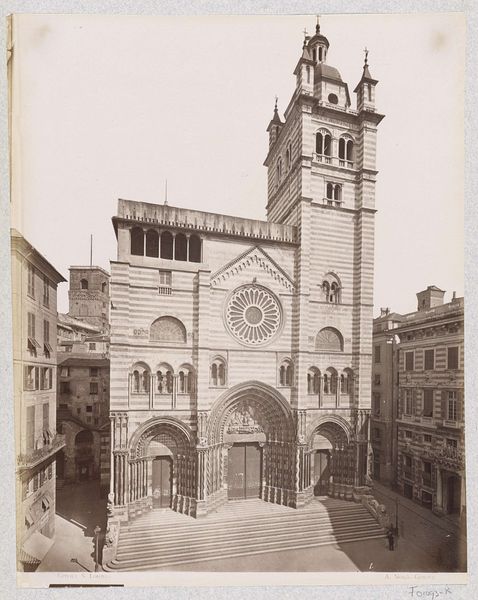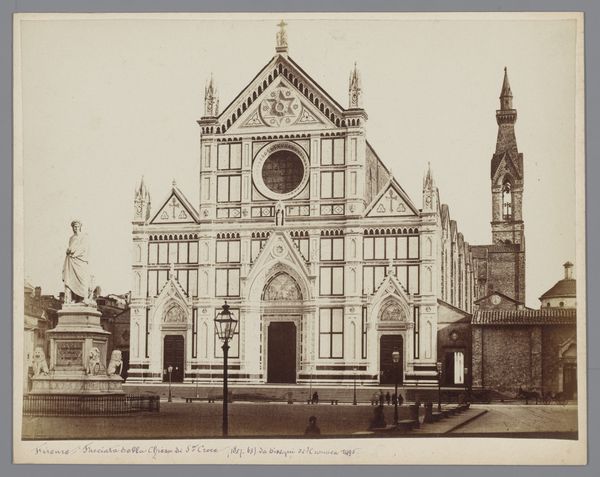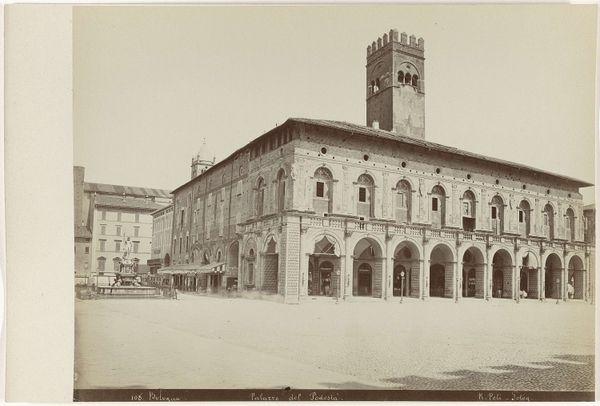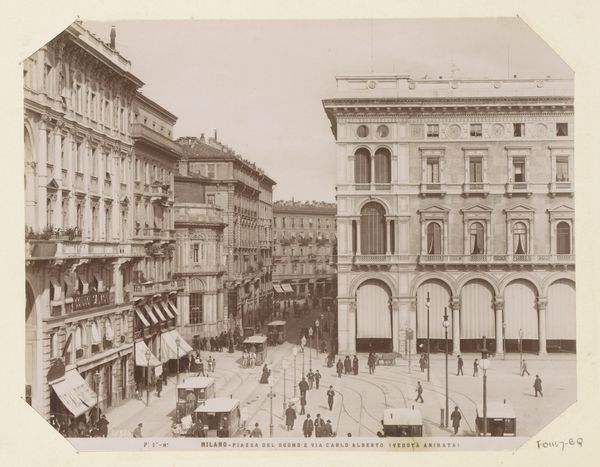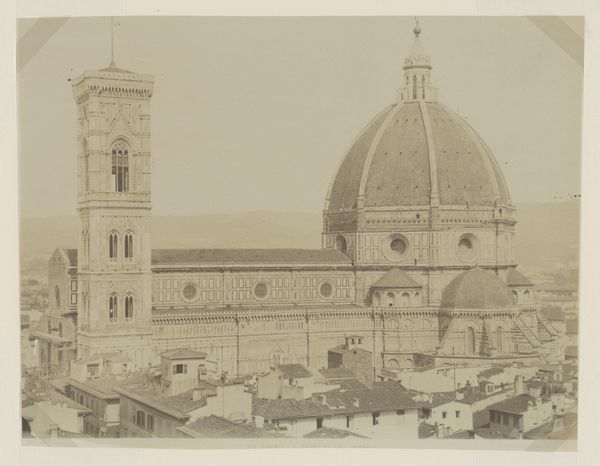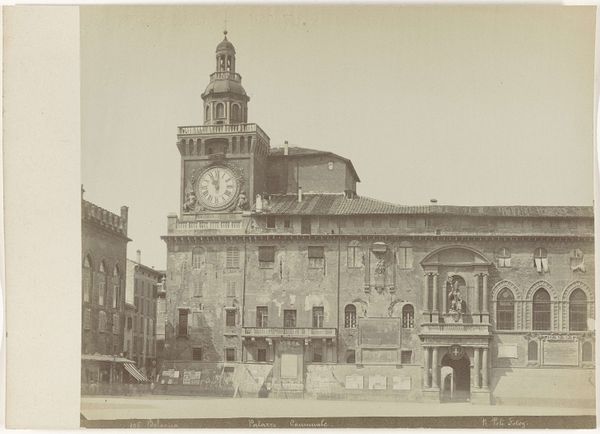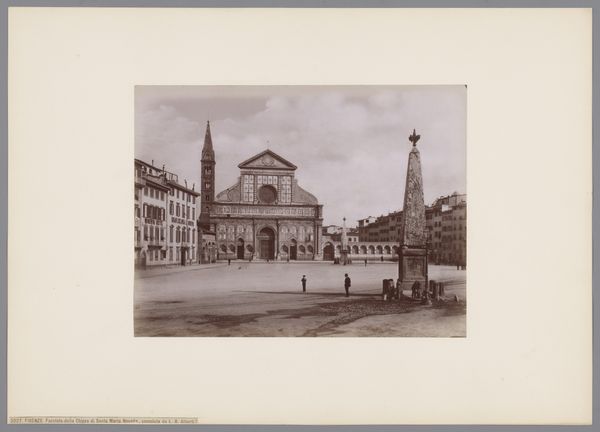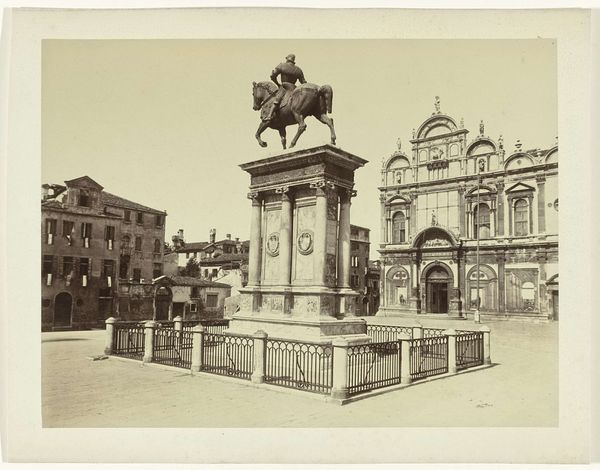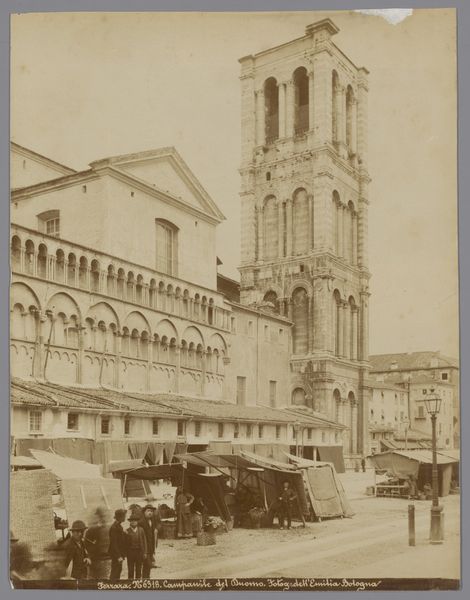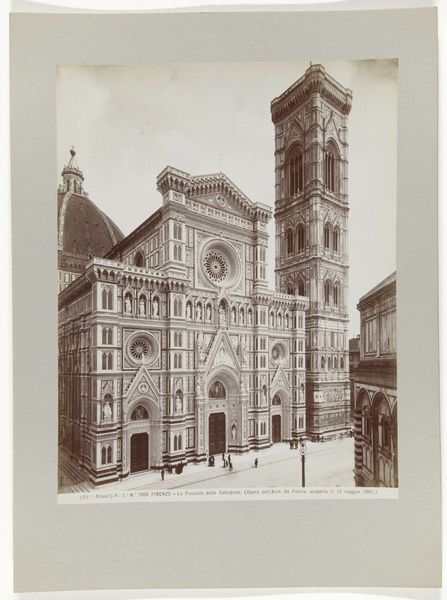
Dimensions: height 204 mm, width 255 mm, height 241 mm, width 328 mm
Copyright: Rijks Museum: Open Domain
Curator: This evocative photograph, a gelatin-silver print from around 1880 to 1895, captures the facade of Santa Maria Novella in Florence. It's credited to Fratelli Alinari, a studio renowned for documenting Italian art and architecture. Editor: My immediate impression is one of monumental serenity. Despite the presence of people and carriages, there's an almost dreamlike stillness, emphasized by the sepia tones and the expansive, sun-drenched piazza. Curator: Precisely. The composition emphasizes the Renaissance ideal of harmony and proportion embodied in the facade, created by Leon Battista Alberti in the 15th century. Observe the careful balance of geometric forms: squares, circles, and rectangles. The facade is, itself, like an icon of classical order. Editor: It speaks to a particular moment in history. Photography, then, served not just as documentation, but as a tool of empire and cultural authority. Think about who had access to this image, what stories it told about Florence and Italy to a European audience hungry for 'Grand Tour' experiences, and how the indigenous working-class may have experienced it. Curator: Yes, the photograph invites us to contemplate the symbolism inherent in Renaissance architecture. For instance, the upper level draws heavily on ancient Roman triumphal arches, a visual assertion of Florence's status as a 'New Rome', reborn after the Medieval era. And you see that ocular window there above the portal, and the emphasis on horizontal balance and proportion? Those echo Roman concepts of perfection. Editor: And I’m drawn to the stark contrast between the enduring power of the architecture and the fleeting presence of the figures in the piazza. Their daily lives are set against a backdrop of almost unimaginable historical and symbolic weight. It is not simply a static picture, it creates dialogue and historical record between power and people. Curator: The use of light in this piece gives it staying power. Sunlight softens the outlines while clarifying all its salient details and embellishments. It has a near reverential presence for its time and place, and helps create this overall sense of sublime balance and near perfection, both aesthetic and mathematic. Editor: I find myself pondering, then, about photography’s own claims to truth and objectivity. What was left out of the frame? What narratives were intentionally, or unintentionally, suppressed? What stories were captured in light but, unseen by those that held the light, would fade with its absence? Curator: Well said. "Voorgevel van de Santa Maria Novella te Florence" truly holds its own for interpretation through a modern and classical context. It's a rich study in symbols. Editor: Yes, and considering its social dimensions also illuminates a story about image-making and social realities during that era.
Comments
No comments
Be the first to comment and join the conversation on the ultimate creative platform.
